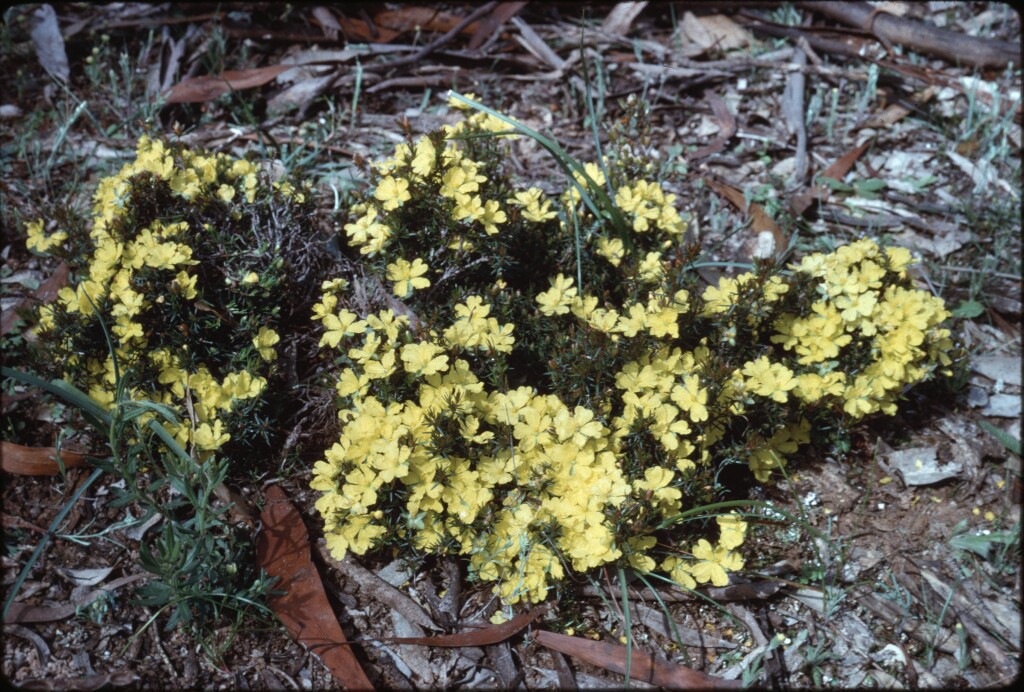Hibbertia acicularis
(Labill.) F.Muell. Prickly Guinea-flowerShrubs with spreading to decumbent, glabrous branches to 40 cm long. Vestiture of simple, tubercle-based hairs. Leaves linear-lanceolate, 3.2–7.1 mm long, 0.5–0.9 mm wide, gradually tapered to terminal awn, puberulous to glabrous above; petiole 0.1–0.3 mm long; margins narrow, revolute, ± level with glabrous broad central ridge below. Flowers on peduncle 3–24 mm long, terminal on long or short shoots with acicular bract 0.8–2.3 mm long subtending calyx; sepals 3.8–6 mm long, unequal, with straight and/or hooked hairs, rarely glabrous; petals obovate, 3–5.6 mm long, bright yellow; stamens 6–8 in one cluster; filaments mainly free; carpels 2, tomentose to velvety. Flowers mainly Oct.–Dec.
GipP, OtP, Gold, GGr, NIS, EGL, EGU, WPro, HSF, OtR, Strz. Also SA, Qld, NSW, Tas. Locally common plant of sandy coastal heaths and heathy woodlands east of Port Phillip Bay, with a western outlier in the Otways near Chappie Vale.
Although the glabrous branches and elongated peduncle will usually distinguish Hibbertia acicularis from H. exutiacies the single subulate bract subtending the calyx of the former is a more reliable diagnostic character in some forms.
Toelken, H.R. (1996). Dilleniaceae. In: Walsh, N.G.; Entwisle, T.J., Flora of Victoria Vol. 3, Dicotyledons Winteraceae to Myrtaceae, pp. 300–313. Inkata Press, Melbourne.
 Spinning
Spinning
